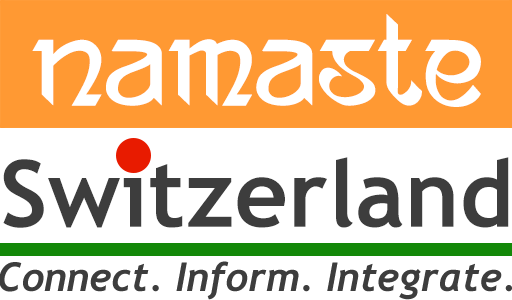The children wanted to know more! And that took me back to the good old times…
“Mama – you always tell us the stories about how good wins over evil on Diwali and other Indian festivals. And about how all of the Indian festivals end with food and sweeties. Tell us about what else you did when you were in India. You always show us that ‘Rang Barse’ song with that tall man and the ‘Pichkari’ song with the ‘Wasser Pistole’. Did you also do that?” asked my 12-year-old son. My younger daughter pitched in, “Yes, yes, yes! Tell us about how you had fun with ‘Nani’!”
That got me thinking how distant and far my reality during my childhood was that of my Swiss-born children. That also took me back in time… to safer and more colourful events over Holi.
Join me on my colourful trip down memory lane:
Location-based food, colour, fun
North India: In Delhi and Chandigarh – Chhoti Holi was the evening when the entire neighbourhood lit a bonfire and danced around it –this was the burning of Holika. The next day was Holi – the time for ‘laddoos’ and ‘methi pakoras’; ‘gulal’, ‘pichkari’, water balloons and ‘thhandai’.
Around 8:00am, the neighbours would start to gather in the common garden, equipped with dry colours, water balloons and water pistols. The mums would bring along all the sweet and salty eats, the ‘thhandai’ and cold drinks.
We would all b dressed in white and greet each other with ‘gulal’ before departing with our friends to throw water balloons at each other – of course, within limits set by the parents (below knee level, only on the back, never on the face or head). Before entering the house, we were all hosed down and made to walk straight into the bathroom on a newspaper carpet that the parent’s had laid out.
With time, this changed. Grease, eggs, and permanent colour made us stay indoors. But the food and the neighbourly meetings were always there.
I remember, once, when I was 10, my neighbours sent ‘methi pakoras’ home – and ‘kaaju burfi’.
The foodies that Punjabis are – my family attacked the delicious-smelling eats, when neighbour aunty produced another mini-plate saying, “Ye bacchon ke liye hai”. So while my brother and I wiped out the tiny plate – my parents and paternal granny simply could not get their hands off the food. They seemed a touch too enthusiastic.
An hour later – there was madness in the house. Both, my grandmother and my mother had pulled their dining chairs in front of the mirror and cracking up with laughter. My mother was merrily commenting on the “old woman” in the mirror and my grandmother wouldn’t stop laughing at the younger woman’s “curly, short hair and glasses perched up her nose”. They rocked back and forth and laughed with tears pouring down their cheeks.
My father was asleep. I was worried seeing them behave so erratically, so I called aunty.
“Arey! They ate the ‘pakoras’ along with the ‘mitthai’! Give them something salty to eat! Chips le lo. They must eat the chips and drink ‘shikanjwi’ without sugar (homemade lemonade without sugar, which she graciously made and gave me a big bottle of) – the ‘bhang’ effect will go.
Little did I know until that moment what ‘bhang’ was.
In retrospect – it was so funny to watch my grandmother having so much fun with my mother at each other’s expense!
South India: Our Holi in Bangalore marked the realisation of different cultures. While Diwali, Onam and Pongal were all celebrated with prayers and offerings at the temples before greeting each other; Holi was a mellow affair. But, we made sure it was celebrated all the same.
My parents invited their friends and kids over. There was always ‘gulal’ at the entrance, which we put on each other’s cheeks and foreheads. There were the sweetmeats and cold drinks. It was a relatively pleasant and relaxed festival.
Sometimes, we kids would throw an occasional water balloon or two from our 6th floor balcony at passers-by – but we’d miss them! Nevertheless, it was fun. The balcony would be turned into a water park of sorts with ‘pichkaris’ and colour.
This was our relaxed Holi.
West India: Ahmedabad was the time for ‘gujjias’, ‘khakhras’, ‘theplas’, and ‘puran-polis’. Of course, we’d bring out the chai-coffee, juices and ‘bhang’-less ‘thhandai’.
All our friends would be invited for potluck brunch. So yes, more food from all across the country would include ‘gulab-jamuns’ and ‘rasgullas’. We would colour each other up; run through the neighbourhood – ringing doorbells, yelling ‘Holi-hai’ and putting dry colour on one and all. This was ‘our regular Holi ki Toli’ of the area. So no doors were slammed on our faces.
By the time we moved to Mumbai – times were changing. Security guards of the building would keep an eye on the kids to ensure no one from outside the premises would bother ‘their kids’ – especially the girls. Outside the buildings, there were constables ensuring that no vandalism or harassment would be caused to the people. It was initially daunting, but then, we realized it was all done with safety in view. By now, mild acids had replaced grease and eggs – unfortunately…
I wondered if this was the sad demise of a festival I so enjoyed. But then, things were getting out of hand. Boundaries and personal limits were being crossed. Lines between strangers and friends were beginning to blur – but not in a pleasant way.
The young boy coyly attempting to make friends with the girl they had a crush on, slightly be able to touch her arm or cheek were now being replaced by bold, harsh, uncouth youth. Holi was losing its innocence and charm…
Today, I hear people still retain the Holi spirit; but play Holi with only close friends and family – as peacefully as possible. The clock seems to be turning back to safety and close ties.
And I hope, at some time, my kids will be able to experience the Holi I nostalgically share with them.
Just as mums live their second childhoods through their children, why not give the children a peek into your childhood and connect to the kid within you?
Illustration by Sharanya Mangeshwaran
Disclaimer: Opinions expressed belong solely to the content provider. Namaste Switzerland does not undertake any financial/reputational/legal/misrepresentational impact or other obligations/ liabilities that may arise from the content.













Trackbacks/Pingbacks